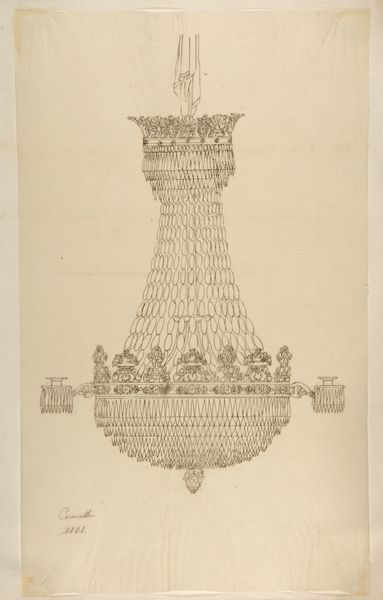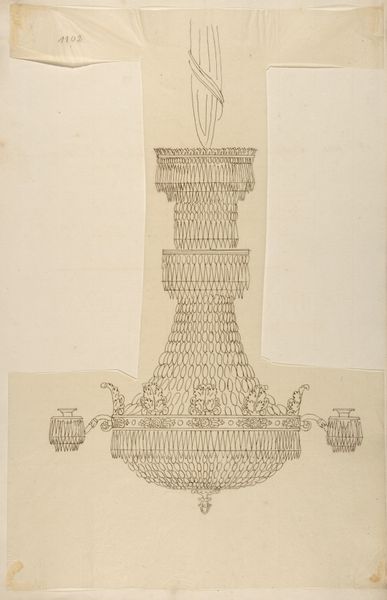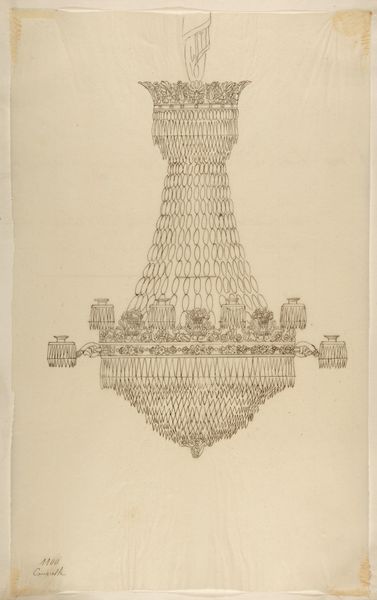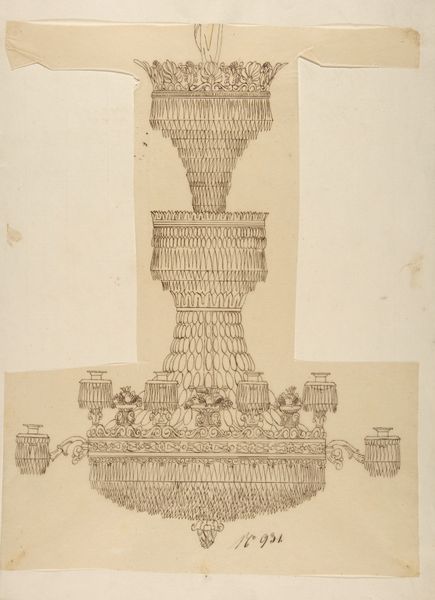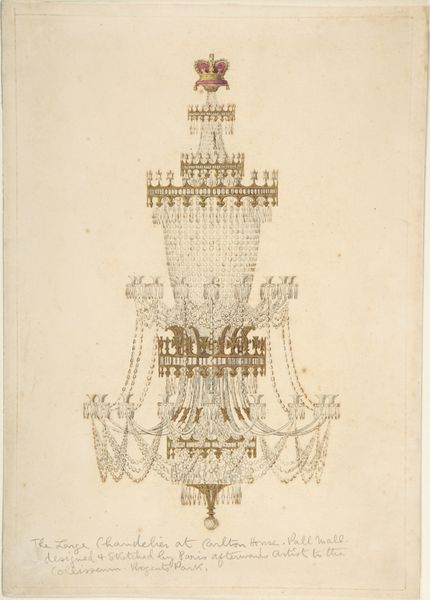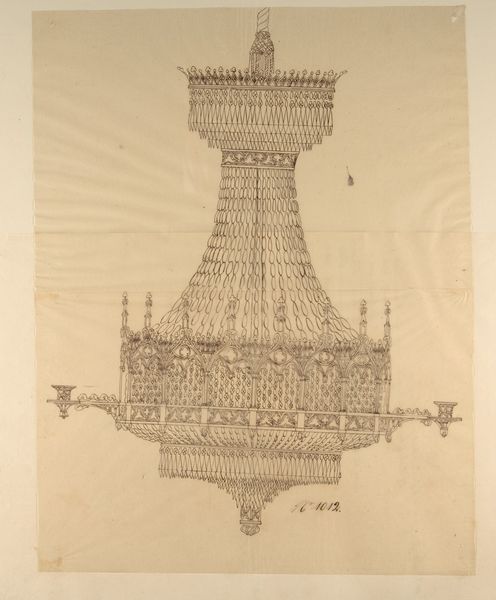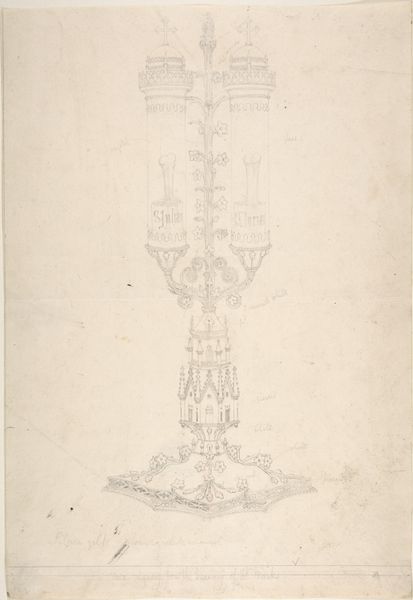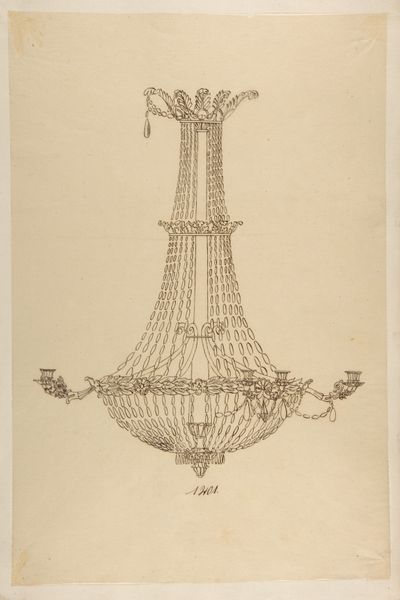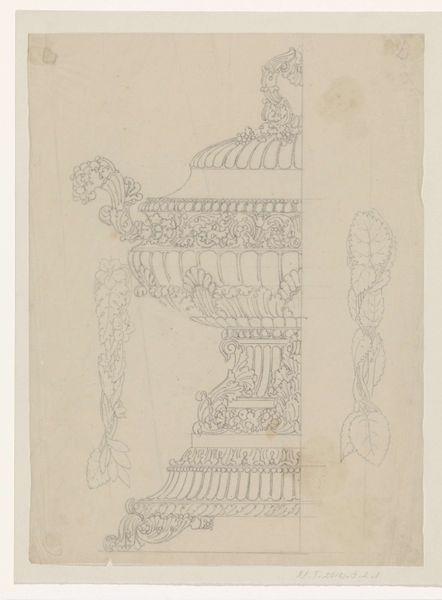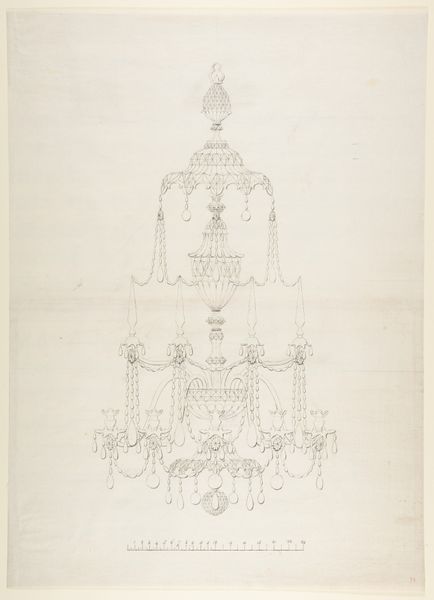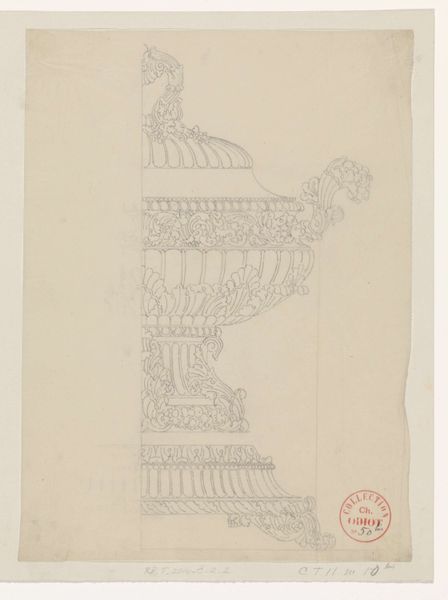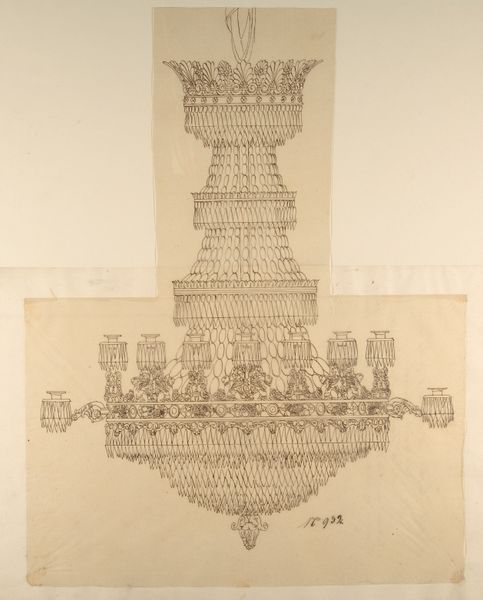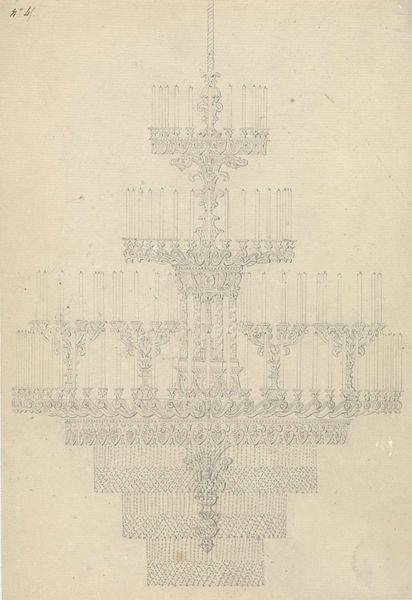
drawing, print, etching, ink, pen
#
drawing
#
neoclacissism
# print
#
etching
#
etching
#
ink
#
pen-ink sketch
#
pen
Dimensions: sheet: 16 1/8 x 10 1/16 in. (41 x 25.5 cm)
Copyright: Public Domain
Curator: Well, this is a particularly captivating study. We are looking at an object listed as "Design for a Chandelier," a 19th-century drawing currently residing at the Metropolitan Museum of Art. Editor: My first thought is lightness. Despite all the details, the fine pen work creates a drawing that feels remarkably airy and graceful, as if it's floating right before our eyes. Curator: The design adheres quite strictly to Neoclassical ideals, with the symmetrical structure. Think about the function of chandeliers within elite social settings of the 19th century. Illumination became a symbol of progress. These weren't just functional objects; they were declarations of status and modernity, tools to project power through curated spaces. Editor: Absolutely. And consider the production. While attributed to an anonymous artist, think of the numerous artisans, the glassblowers, metalworkers, and the designers who conceived this object. The level of material detail, meticulously rendered through print, ink, and etching, demonstrates how even at the planning stage, every aspect of production was valued. Curator: The anonymity in this case makes me curious, too. We lack information regarding who commissioned such a design, what manufactory might have realized it. It begs the question about the power dynamics embedded in such acts of patronage and production. Editor: It's tempting to view designs as purely aesthetic endeavors, but they also speak volumes about the material aspirations of a particular time. The etching allows for its reproduction, pointing to wider circulation and perhaps a catalogue intended to encourage particular social practices centered around light and luxury. Curator: Right, and if you think of display, imagine the cultural narratives being spun when this piece hung, glittering in a grand hall or parlor. Not just illumination, but an assertion of wealth and sophistication through technological achievement. Editor: So, looking back at this rendering, I’m thinking of this interplay between its graceful aesthetic and its deeper material connections—it enriches our appreciation significantly. Curator: For me, it is a quiet consideration on the interplay between art, society, and industrial advance in the 19th century.
Comments
No comments
Be the first to comment and join the conversation on the ultimate creative platform.
